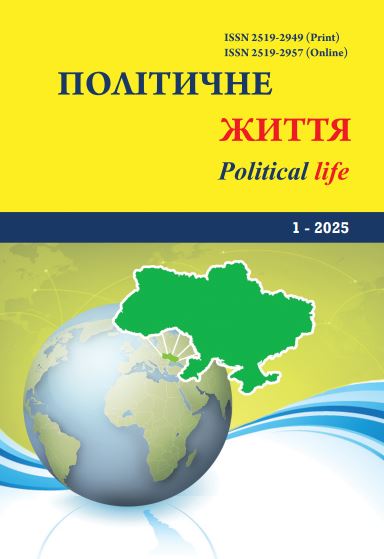Moscovian military aggression: the impact of the war on crime in Ukraine in the light of statistics for 2013-2024
DOI:
https://doi.org/10.31558/2519-2949.2025.1.2Keywords:
Ukraine, crime prevention, crime trends, police statistics, criminology, the 2022 Moscovian military aggression against Ukraine, full-scaled aggression of Russia against Ukraine, the police, policing, law enforcement agenciesAbstract
The paper focuses on the 2013-2024 crime trends in Ukraine subjected to changes and challenges due to the 2022 Moscovian military invasion of Ukraine. The article demonstrates that the number of crimes committed in Ukraine in 2022, 2023 and 2024 exceeded the number of crimes committed in 2021. The author concludes that continuous attacks on Ukrainian cities by Russian drones and missiles and destruction of the infrastructure left many people without their homes, incomes, hopes and perspectives. Therefore, the number of crimes increased significantly in 2023-2024 considering the ruination of all aspects of economic and social life in Ukraine. All these factors, including further mass migration of people from the frontline areas, increased crimes rates significantly. In addition, the crime landscape took new forms and characteristics having received the injection of purely wartime crimes (crimes against military service, war crimes and crimes against national security). For example, in 2022, law enforcement agencies registered five times more crimes against national security as compared to the whole period of 2013-2021. The author found that the Moscovian military invasion had brought an increase in numbers of crimes in the sphere of protection of state secrets, inviolability of state borders, provision of conscription and mobilization. Additionally, crime rates resulting from illegal use of firearms rose after February 2022. The War also increased the number of crimes committed with the use of explosives. These crimes have indicated a dualistic trend: 1) the number of crimes increased; 2) the number of criminal proceedings with suspects decreased. The author argues that all material and human resources of Ukraine have been directed to the needs of the defence of the state from the Moscovian military aggression, including the police. Therefore, the quality of investigation of crimes and the preventive effect of criminal punishment decreased proportionally. The War made criminality more rural and ‘cut’ the numbers of detected crimes against human life and health. The author argues that police statistics on torture occupy a very controversial place in the analysis of the general structure of crime in Ukraine. The number of officially registered crimes of torture determines many questions concerning the latent nature of this type of crime as well as the effectiveness of investigation of torture by state agents which become known to the society. At the same time, sex crimes decreased significantly in 2022, as could be expected from the wartime society. The article is also focused on the trends of domestic violence which became an interesting phenomenon of the crime landscape in wartime Ukraine. In the light of the absence of both victims and perpetrators due to mass migration of potential victims and participation of many potential perpetrators in military actions, crime rates go up. No less interesting picture one can find in the case of drug-related crimes. Even in the light of further escalation of military actions, the state continues focusing even on minor drug crimes, what raises the question of the effectiveness and efficiency of crime prevention during the War. While considering property crimes in wartime Ukraine, the first hypothesis appears that the absence of properly organised policing would lead to a serious increase of the number of property crimes. However, the number of property crimes decreased significantly. In contrast, the crime of fraud demonstrates absolutely another trend. Additionally, economic offences and ‘white-collar’ crimes also demonstrate how crime has adapted to wartime conditions.

